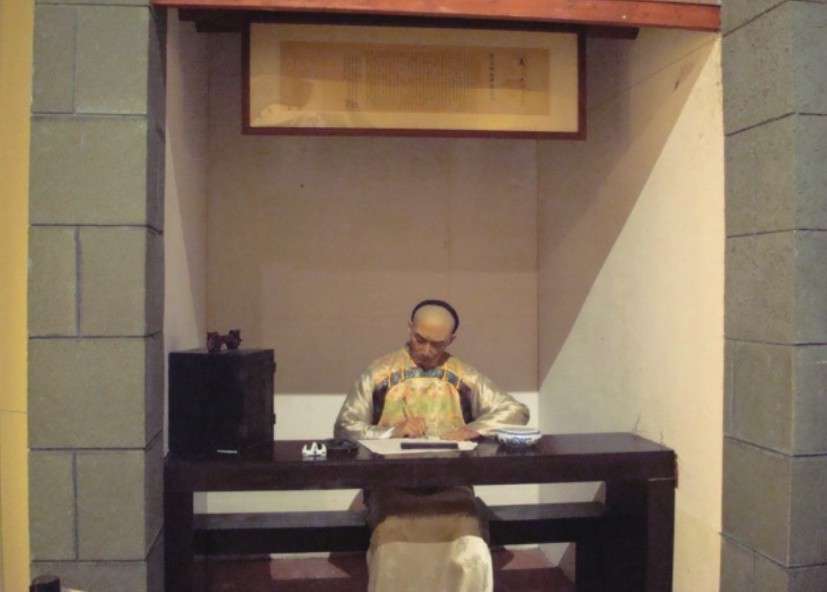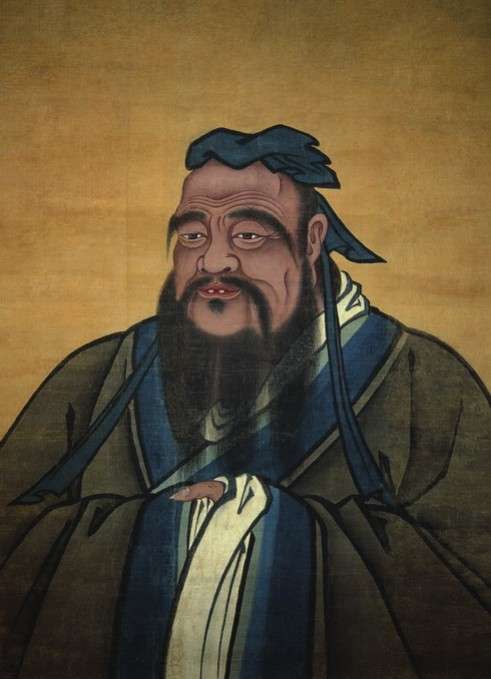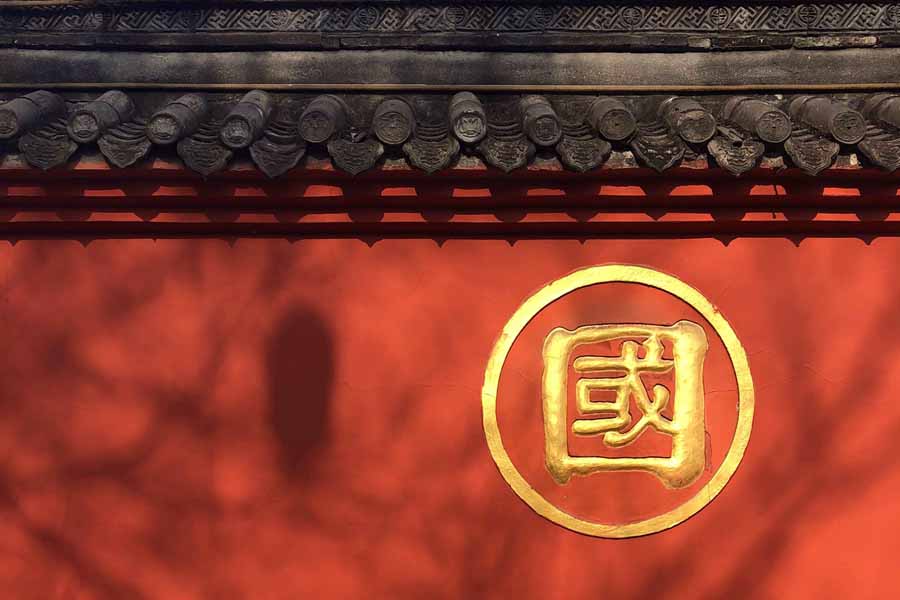The historical importance of education in Chinese culture is derived from the teachings of Confucius and philosophers of the middle and late Zhou eras. Education in China has been an equalizing force from ancient times. It has become the means by which individuals from even the humblest backgrounds can rise to great heights. At the same time, it is also a powerful mechanism for implementing the ethical and social norms of Chinese society.
Development of Ancient Chinese Education
In the Spring and Autumn Periods, private schools prevailed and many scholars of different schools of thought spread their teaching in this way. Confucius, the great educator, devoted all his life to the private school system and instructed most students. It is said that over 3,000 disciples followed him and 72 of them made outstanding achievements. Besides that, other schools such as Taoism were also taught widely and this led afterward to“a hundred schools of thought” in the Warring States Period.
In 136 BC during the reign of Emperor Wudi(156 BC -87 BC), the government introduced a system which was named “Taixue” or Great Academy. Usually, the students were provided with a free diet and mainly studied classical Confucian books. Students who were admitted to the “Taixue” were destined for careers in the civil service after they passed the internal exams and were competitively selected for various positions. Initially, only fifty-five students were admitted to the Great Academy. By 8 BC, the Academy had an enrollment of three thousand students. During the Han Dynasty provincial schools were established and the Confucian tradition of education was spread across China. In the Han Dynasty, there had been no system for testing a person’s ability, and the most prevalent method was merely through observation. Officials would see who was intelligent and recommend individuals to their superiors. The curriculum at the Great Academy was based on the Confucian “Five Classics” and classes were taught by professors of the “Five Classics” who were known as Boshi (Ph.D.). The basis of Chinese education did not change throughout imperial history till the reign of the last Qing emperors.
In the Sui Dynasty, Imperial Examination as the main form of education began to be put into practice. It lasted more than 1,300 years until the last examination during the Qing Dynasty. It enjoyed a long and dominant position in the history of ancient Chinese education.
The Tang Dynasty adopted the personnel selection system and gradually refined it. The main subjects of the examinations were writing and study of classical books, which were the most popular, as well as mathematics, law, calligraphy, etc. Most of the prime ministers during that feudal period were titled Jinshi (Imperial Scholars) and were good at writing. The candidates almost always came from two sources. These were students of official schools and also intelligent people undergoing the exams in their local county, who were entitled Juren (First-Degree Scholars), when they achieved the necessary qualifications to take the central government examinations, held each spring.
The form and content of the exams varied from one another. The one testing knowledge of the classical books followed the method of filling in the blanks. Usually, one page of a book was chosen and several lines would be omitted. The candidates were required to fill in the missing lines. Alternatively, they might be required to explain some of the lines in the book. Therefore the need to be able to recite the work was important. While the tests for “Jinshi” were not so easy, they required a talent for literature.
Candidates who passed the highest imperial examination would have a promising future as court officials. The dragon had always been regarded as the symbol of mighty power and especially that of the rights exercised by the emperor; consequently, the success of examination candidates was proudly called “stepping into the dragon’s door”. The most successful scholar was then granted the title of Zhuangyuan (Champion in imperial examinations).
In the Song Dynasty, subjects raised by the government were much fewer than that in the Tang Dynasty, but the examination for Jinshi was still fashionable. Most of the prime ministers of high rank also had to pass the exam in a subject which then was regarded as an exclusive subject for prime ministers. Meanwhile, regardless of form and content, the system underwent great innovation.
Firstly, the extension of matriculation was broadened. In the former dynasties like the Tang Dynasty, each year the Jinshi was no more than twenty to thirty in number but in the Song Dynasty, there were as many as hundreds of people passing the exams and even those who failed the exams many times could apply for tolerance of the emperor and so serve as officials with less important positions.
Secondly, the frequency of exams was limited to a fixed one every three years. The local tests came first in autumn and in the following spring, the qualifying candidates would trudge to the capital for the higher imperial examination.
Thirdly, so far as content was concerned, while the earlier examinations laid much stress on the ancient classical texts, the great reformer Wang Anshi (1021-1086) advocated an innovation that was much more practical. He changed the blank-filling of verses into composition about the verse, giving free reign to the ability of the candidates. However, this was opposed by other grandees and did not last for long.
Finally, to prevent the practice of favoritism, examinees’ names were closely covered on their papers which were then exchanged among different local examiners. This did indeed greatly reduce the incidence of cheating.
In the Song Dynasty, few governmental schools were erected, but it was the vogue for scholars to set up numerous private educational organizations named Shuyuan. The function of this kind of school was to cultivate talented people, encourage devotion to learning, as well as to spread culture. The four most reputed Shuyuan were named Bailudong Institute of Jiangxi, Songyang Institute and Yingtian Institute of Henan, and Yuelu Institute of Hunan. Scholars were invited to give lectures and students were provided with dormitories, desks, and food while basically studying on their own. Subsequently, most of these institutes became places where students prepared for exams.
With the coming of the Ming Dynasty, the imperial examination system reached its period of full bloom. Great attention was given to the administrative procedures and the tests became more rigorous. The Ming government managed to found schools, and strengthened their function to be the only road by which people could take the exams. The provincial and metropolitan examiners tested only eight-legged essays. Candidates were required to write in a fixed style with a fixed word count—it had to be eight paragraphs while imitating the tone of the classics. But this method neglected other forms and contents. Thus it was harmful as it stifled both creativity and imagination.
The Decline of Ancient Chinese Education
Since the Qing Dynasty was dominated by the Manchu ethnic group, they gave their people priority over the Han people. Manchu people attending the imperial examination were not tested but required only to undertake some translation, yet the Han people were still formed a majority of the examinees. As the tight hold on affairs held by the Qing Dynasty became more and more unpopular, the education system also needed fresh ideas and input as it was a disservice to the country. A trend appeared towards the way in which the positions of court officials could be purchased and this sometimes even gave rise to unlawful pass to the degraded system.
It is interesting to note that Fan Jin, one of the characters depicted in the novel of The Scholars by Wu Jingzi, is quite a typical victim of the declining system. The hero Fan Jin took pains time and time again to achieve a pass in the provincial examination. He never once gave up, he was in his fifties when his efforts were finally rewarded. When he got the news that he had finally ranked on the list of successful candidates, he was in delirium with great joy!
In contrast to western education, particularly in regard to the model of higher education in Medieval and Renaissance universities where students were encouraged to engage in disputation, traditional Chinese education consisted primarily of rote learning and memorization of the Classics. Candidates for the Imperial Examinations were required to memorize a vast amount of classical materials and were never needed to memorize a vast amount of classical materials and were never required to demonstrate the ability to either theorize or challenge a particular premise. The purpose of the scholar class after all was: the creation of bureaucratic generalists familiar with an accepted ethical outlook and body of knowledge, not with the growth of knowledge or with academic specialization.
The Imperial Examination System
The imperial examination system (also called the Keju examination system) is commonly regarded as having started around the year 606 and was officially ended in 1905, for about 1,300 years. During this time, the exams became the central focus of a state-orchestrated system of high-stakes employment tests and test-driven education. Through these exams, Chinese emperors identified individuals who would initially serve as scholars in the imperial secretariat known as the Hanlin Academy. From these positions, the scholars might be promoted to serve as district magistrates, prefectural governors, provincial governors, national departmental ministers or even prime ministers or grand councilors. These exams were used to select individuals for high-level, high-power positions; along with all the prestige, legal privileges and advantages, power and financial rewards for the candidate and the entire extended family, and ancestry that came with such positions.

In its most common and stable form, the exams, which included Confucianism, poetry, official documents and national politics, consisted of three progressive levels: local district exam, provincial exam, and palace exam. First, a candidate took the local district exams known as the Tongshi. These exams were given once every two years. The next level was the provincial exam called Xiangshi, which was given once every three years at the provincial capital. The third set of exams took place in the national capital and was given the spring after the provincial exams. The third level consisted of two steps: The joint exams called Huishi, to be followed by the palace exams, Dianshi. One can take these exams as many times as desired. The system was open to all males. However, in the early years during the Sui and Tang dynasties, to be eligible to take the exams, each examinee was required to identify an official who had agreed to serve as his mentor. This requirement was removed starting from the Song Dynasty.
Both the earliest district exams and the final palace exams were one-day long. The provincial exams and the joint exams in between, however, were very harsh experiences. Each of these 2 sets of exams was nine days and nine nights long.
Eight-legged Essay (Baguwen)
During the Ming and Qing dynasties, candidates sitting at imperial examinations were required to write essays in accordance with baguwen, a rigid eight-legged form.
The eight-legged essay was the form adopted for the explication of the Confucian classics, which formed the basis for the imperial examination system. Thus, the eight-legged essay and imitations of the classical literary language of the earlier eras of Chinese cultural greatness became the major written genres of the time. There were no further breakthroughs in literary writing, except for a style of artistically heightened descriptions of everyday life experiences, called xiaopinwen (familiar essays), which emerged in the 15th and 16th centuries.
Confucianism
1) Educator as well as Philosopher
One of the most famous people in ancient China was a wise philosopher named Confucius. He was born Kong Qiu, styled Zhong Ni. Confucius was an educator as well as a philosopher. He made many wise phrases and theories about law, life, and government. It’s these thoughts and theories that teach other people lessons about moral principles and rules of life. He traveled about and instructed the small body of disciples that had gathered around him. He lectured to them on the ancient classics. His fame as a man of learning and character and his reverence for Chinese ideals and customs soon spread through the principality of Lu. His theories and principles were spread throughout China by his disciples, and soon many people learned from his wise sayings.

Confucius had no opportunity to put his theories to a public test until, at the age of 51, he was appointed magistrate of Chung-tu, and the next year minister of crime of the state of Lu. His administration was successful; reforms were introduced; justice was fairly dispensed; crime was almost eliminated. So powerful did Lu become that the ruler of a neighboring state maneuvered to secure the minister’s dismissal. Confucius left his office in 496 BC, traveling about and teaching, vainly hoping that some other prince would allow him to undertake measures of reform. In 484 BC, after a fruitless search for an ideal ruler, he returned for the last time to Lu. He died in Lu in 479 BC.
Yet, when the philosopher died, people honored all of Confucius’ work by building temples in every city in China to honor Confucius. Confucius’ teachings and philosophy have been influencing China for nearly 2,500 years. It is called Confucianism.
2) Confucius and Education
A hallmark of Confucius’ thought is his emphasis on education and study. He disparages those who have faith in natural understanding or intuition and argues that the only real understanding of a subject comes from long and careful study. The study, for Confucius, means finding a good teacher and imitating his words and deeds. A good teacher is someone older who is familiar with the ways of the past and the practices of the ancients. While he sometimes warns against excessive reflection and meditation, Confucius’position appears to be a middle course between studying and reflecting on what one has learned. “He who learns but does not think is lost. He who thinks but does not learn is in great danger (Analects of Confucius).” Confucius, himself, is credited by the tradition with having taught altogether 3,000 students, though only 72 are said to have truly mastered the arts he cherished most. Confucius is willing to teach anyone, whatever their social standing, as long as they are eager and tireless. He taught his students morality, proper speech, government, and the refined arts. While he also emphasizes the “Six Arts”—ritual, music, archery, chariot-riding, calligraphy, and computation—it is clear that he regards morality as the most important subject. Confucius’ pedagogical methods are striking. He never discourses at length on a subject. Instead, he poses questions, cites passages from the classics, or uses apt analogies, and waits for his students to arrive at the right answers. “I only instruct the eager and enlighten the fervent. If I hold up one corner and a student cannot come back to me with the other three, I do not go on with the lesson (Analects of Confucius).”
Confucius’ goal is to create gentlemen who carry themselves with grace, speak correctly, and demonstrate integrity in all things. His strong dislike of the sycophantic “petty men” whose clever talk and pretentious manner win them an audience, is reflected in numerous Analects of Confuciuspassages. Confucius finds himself in an age in which values are out of joint. Actions and behavior no longer correspond to the labels originally attached to them.“Rulers do not rule and subjects do not serve (Analects of Confucius),” he observes. This means that words and titles no longer mean what they once did. Moral education is important to Confucius because it is the means by which one can rectify this situation and restore meaning to language and values to society. He believes that the most important lessons for obtaining such a moral education are to be found in the canonical Book of Songs, because many of its poems are both beautiful and good. Thus Confucius places the text first in his curriculum and frequently quotes and explains its lines of verse. For this reason, the Analects of Confucius is also an important source for understanding the role that Confucius’ poetry and art play in the moral education of as well as in the reformation of society.


nice, very imformative